What if your favorite YouTube personality wasn't real? What if they were entirely created by artificial intelligence—their face, voice, personality, and even their opinions generated by algorithms? This isn't science fiction. AI-generated video vlogs are exploding across social media, creating entirely synthetic personalities that are gaining millions of followers and reshaping how we think about digital content creation.
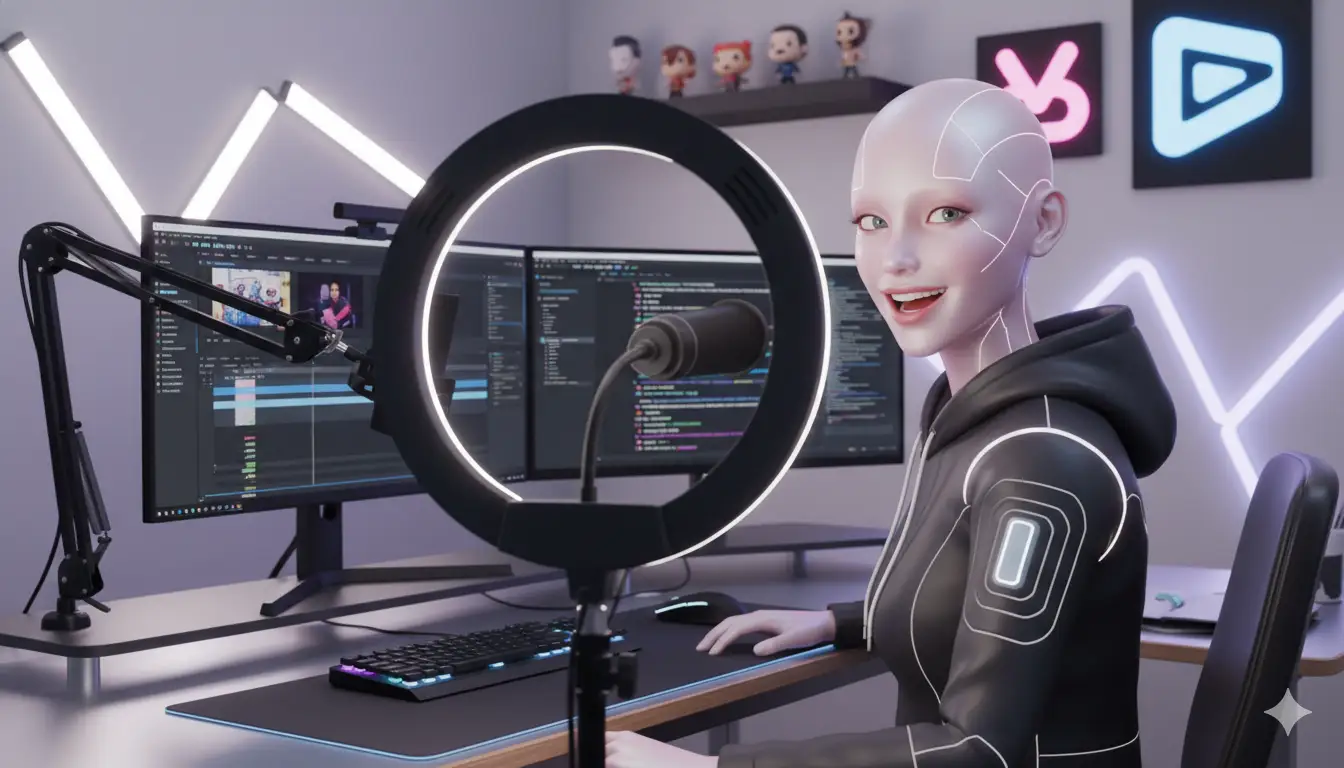
From satirical characters delivering witty social commentary to educational hosts explaining complex topics, AI video personalities are carving out a surprising niche in the digital landscape. Some viewers know they're watching AI-generated content and love it. Others can't even tell the difference. Let's explore this fascinating new world of synthetic content creators and what it means for the future of online entertainment.
What Are AI Video Vlogs and Why Are They Suddenly Everywhere?
AI video vlogs are content created by artificial intelligence that mimics traditional vlog formats—talking head videos where a personality shares thoughts, tells stories, or discusses topics directly with the audience. But unlike human vloggers who record themselves with cameras, these digital personalities are entirely synthetic, created through a combination of AI technologies.
The sudden explosion of AI vlogs comes from the convergence of several technologies that have all matured simultaneously. Text generation AI can write engaging scripts with consistent personality and humor. Voice synthesis creates natural-sounding speech with emotion and character. Video generation tools can now create realistic talking faces and animated characters. Character consistency algorithms maintain the same look and personality across videos.
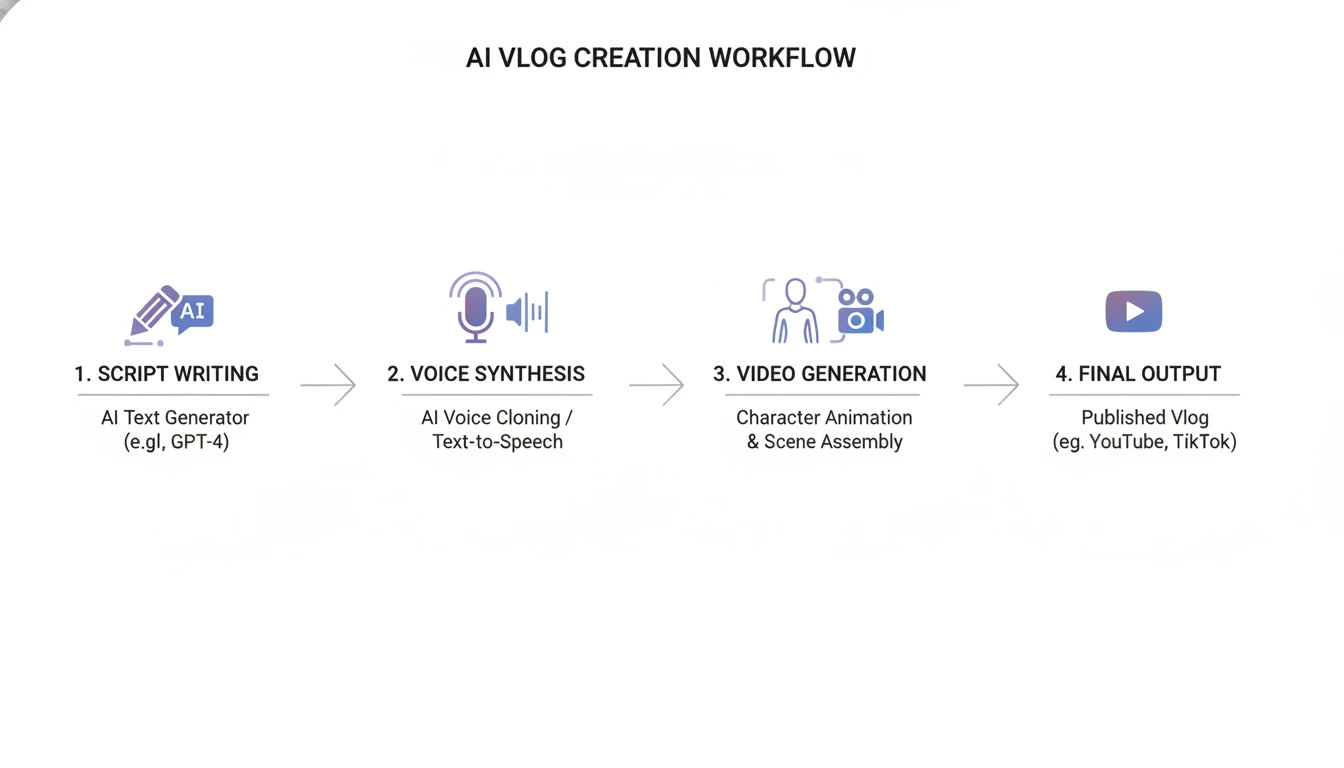
When these technologies work together, the result is remarkable: a digital personality that can create daily content without filming, maintain a consistent voice and character, respond quickly to trending topics, and never get tired or need a break. It's like having a talk show host who works 24/7 and never runs out of ideas.
Why People Are Obsessed with AI Video Personalities
The Novelty Factor and "How Did They Do That?" Appeal
Part of the initial attraction is pure fascination with the technology itself. Watching an AI character that looks and sounds almost human, discussing current events or cracking jokes, triggers that irresistible "how is this possible?" feeling. Audiences are drawn to the technical achievement as much as the content itself.
But the appeal goes deeper than just novelty. AI personalities offer something genuinely different from human creators. They can take on personas and perspectives that would be difficult or impossible for human creators—a philosophical alien discussing human society, a historical figure commenting on modern events, or abstract concepts personified as characters.
Consistent Content Without the Human Limitations
Human content creators face real limitations. They get sick, need vacations, experience burnout, and sometimes run out of ideas. Their content quality fluctuates based on mood, energy, and life circumstances. AI personalities don't have these problems.
An AI vlogger can maintain a consistent upload schedule indefinitely, keep the same energy level in every video, experiment with different content styles instantly, and respond to current events or trending topics within hours. This consistency is surprisingly appealing to audiences who've grown frustrated with irregular posting schedules from their favorite human creators.
The Character Appeal: Personalities Designed to Entertain
Some AI video personalities are designed as deliberate characters rather than pretending to be human. Think of a sarcastic AI robot commenting on human behavior, a fictional creature discussing philosophy, or an animated character with an exaggerated personality. These aren't trying to fool anyone—they're entertainment products that happen to be AI-generated.
This opens creative possibilities that human creators can't easily replicate. Want a dinosaur discussing technology? A medieval knight reviewing modern movies? An alien anthropologist studying human culture? AI makes these concepts feasible without expensive costumes, sets, or special effects.
Different Types of AI Video Personalities Taking Over Platforms
Social Commentary and Satirical Characters
Some of the most successful AI vlogs use fictional characters to deliver sharp social commentary. From Bigfoot vlogs to algorithmically created personas, hyperrealistic AI content is redefining the boundaries of digital creators. These personalities can say things that might be controversial coming from a real person but work perfectly from a satirical AI character. The absurdist humor of having a bigfoot or yeti discussing politics adds a layer of entertainment that makes serious topics more digestible.
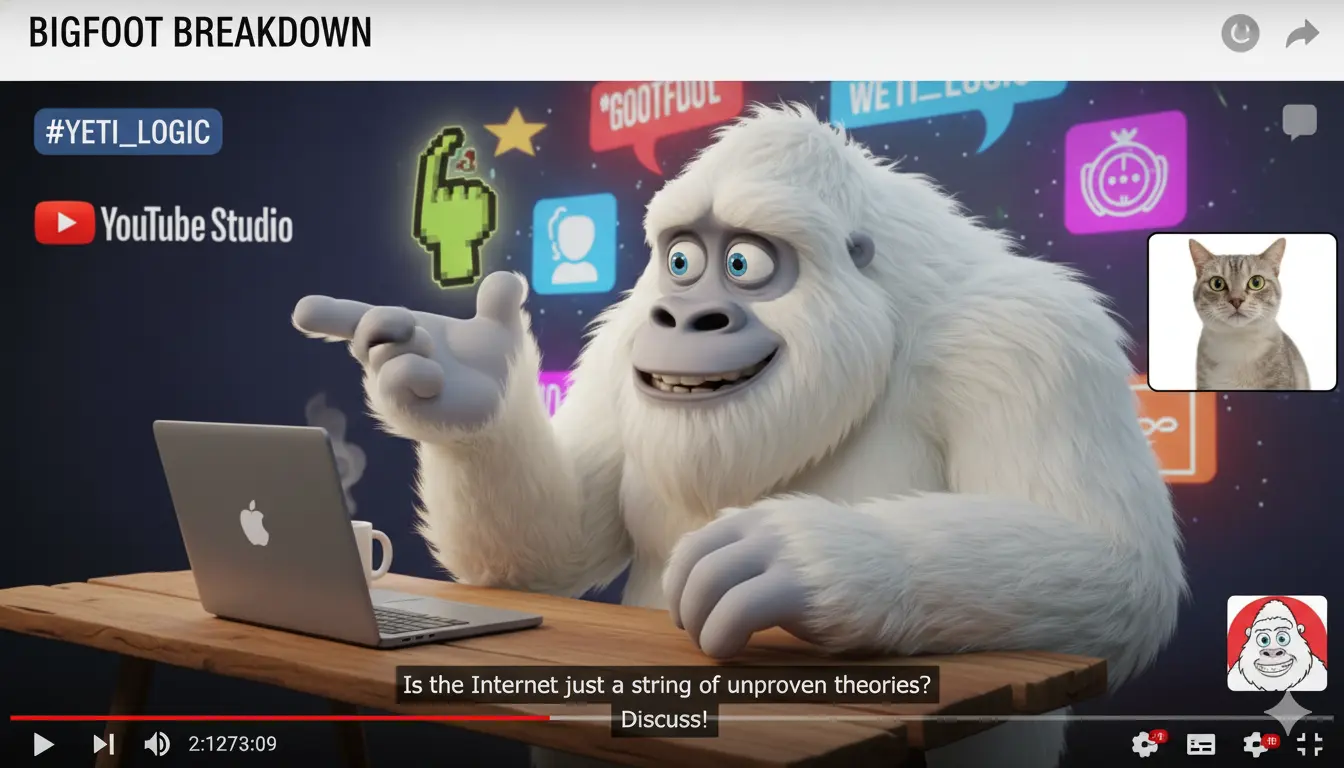
These characters often develop distinctive personalities—a particular perspective, recurring jokes, and recognizable mannerisms—that make them feel like real personalities rather than just AI experiments. One breakout example is the Instagram page "stormtroopervlogs" featuring AI-generated Star Wars stormtroopers that has attracted over 300,000 followers, with characters like "Greg" providing entertainment through their humorous ineptitude. Audiences form genuine connections with these synthetic hosts, eagerly awaiting their takes on current events.
Example of AI-generated vlog content showcasing synthetic personalities
Educational Content with AI Hosts
AI personalities are proving surprisingly effective for educational content. An AI host can explain complex scientific concepts, historical events, or technical subjects with perfect clarity, patience, and consistency. They never stumble over complicated terminology, can repeat explanations exactly when creating series of related videos, and maintain an engaging teaching style throughout.
Some educational AI channels create character-driven narratives around learning—a time-traveling historian, a friendly robot scientist, or personified concepts like "Professor Statistics" explaining mathematics. This character-based approach makes dry subjects more engaging, especially for younger audiences who grew up with animated educational content.
Entertainment, Comedy, and Pure Performance
AI-generated sketch comedy, improvised conversations between multiple AI characters, and scripted performances show the pure entertainment potential of synthetic personalities. Some creators generate entire comedy shows with AI characters playing different roles, complete with timing, delivery, and even visual gags.
What makes this particularly interesting is how AI can generate variations on themes—creating multiple versions of the same joke with different delivery styles, or generating entire comedy specials around specific topics. This lets creators test what works and iterate far faster than traditional content creation.
Virtual Influencers and Brand Personalities
Companies are creating AI personalities as brand ambassadors and marketing tools. These synthetic influencers have consistent looks, personalities, and messaging that align perfectly with brand values. Unlike human influencers who might make controversial statements or demand increasing compensation, AI brand personalities stay exactly on message.
Some virtual influencers have gained massive followings, with audiences treating them like real celebrities. Nobody Sausage, a digitally animated character, has attracted over 30 million followers across multiple social media platforms through short-form dance videos and brand collaborations. They collaborate with fashion brands, appear in advertising campaigns, and engage with followers through seemingly personal interactions—all while being entirely synthetic. Studies show that AI influencers can achieve up to 3x higher engagement than human counterparts in certain niches.
The Technology Stack Behind AI Video Vlogs
How It All Comes Together
Creating a convincing AI video vlog requires orchestrating multiple AI systems to work together seamlessly. Here's how the magic happens behind the scenes.
Script Generation: Large language models like GPT write the dialogue, maintaining consistent personality, humor, and perspective across videos. The AI can be prompted with specific topics, tones, and character traits to ensure the content matches the personality's established voice.
Voice Synthesis: Tools like ElevenLabs or similar platforms generate speech that sounds natural and expressive. The synthetic voice can convey emotion, vary pacing for emphasis, and maintain consistent character throughout the video.
Visual Generation: Video tools create the actual footage—either realistic human-like faces, animated characters, or stylized avatars. Some systems like D-ID can animate static images to create talking head videos, while others generate characters from scratch.
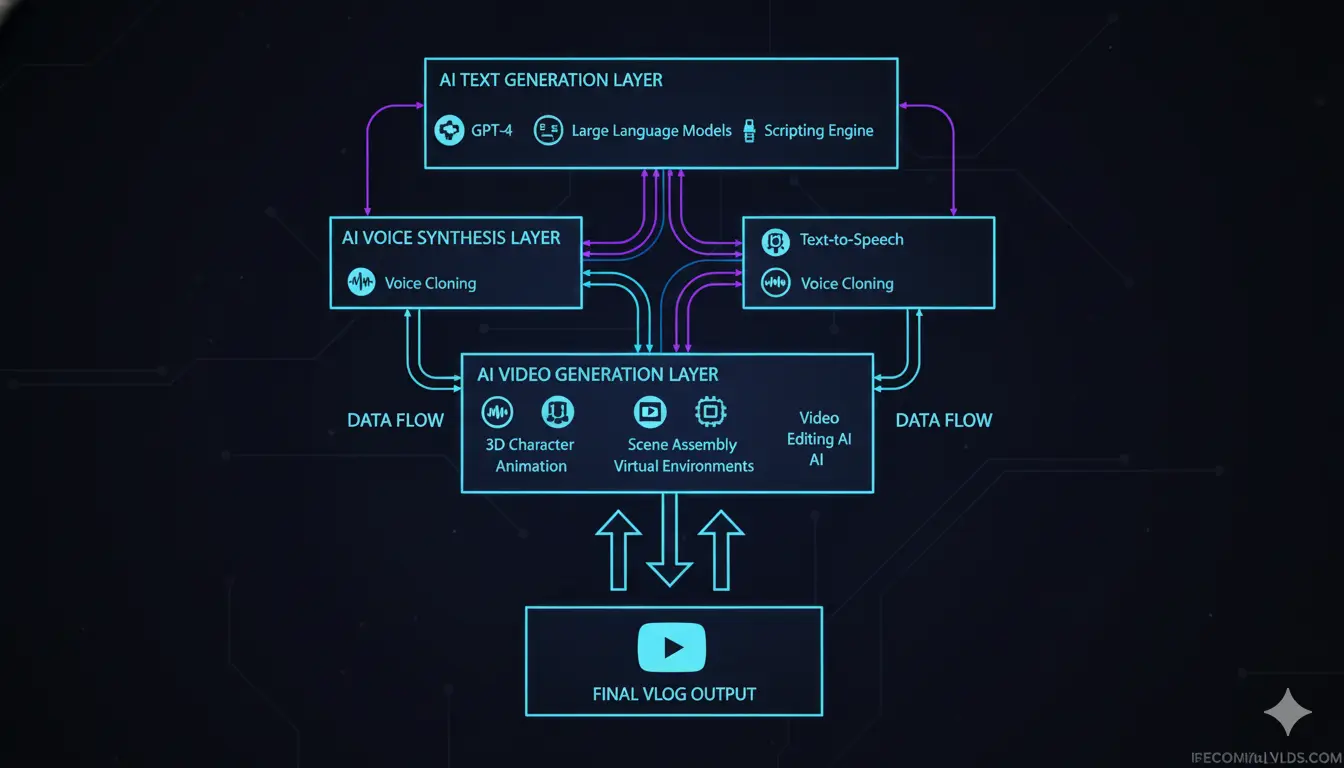
Character Consistency: Maintaining the same look, voice, and personality across multiple videos requires careful management. Creators build detailed character profiles, save voice models and visual templates, and use consistent prompting strategies to keep the personality recognizable episode after episode.
The Challenges AI Vlogs Still Face
The Uncanny Valley Problem
Despite impressive technology, AI-generated faces and movements can still trigger that uncomfortable "something's not quite right" feeling known as the uncanny valley. Subtle issues with eye movement, lip sync, facial expressions, or body language can break the illusion and remind viewers they're watching something artificial.
Some creators lean into this limitation by using deliberately stylized or cartoony characters rather than attempting photorealistic humans. As experts at Georgia Tech note, "AI does not have emotions as we understand them in humans, but it knows how to mimic emotional speech." An animated character with obvious AI origins can be more appealing than an almost-but-not-quite-human face. The most successful AI avatars often lean into intentional art direction rather than photorealism—Duolingo's partnership with Rive to create AI-powered conversations using its iconic characters demonstrates how relatability and fun can trump realism.
Building Real Emotional Connections
While AI personalities can be entertaining and informative, creating genuine emotional bonds with audiences remains challenging. Human creators build relationships through vulnerability, authenticity, and shared experiences. AI can simulate these elements, but something about knowing the personality isn't real creates an emotional distance.
That said, people have formed emotional attachments to fictional characters for centuries. The question is whether AI personalities will follow that pattern—becoming beloved characters like animated movie protagonists—or remain at arm's length as obvious artificial constructs.
Long-Form Narrative and Character Development
Current AI systems excel at creating individual videos but struggle with long-term narrative arcs and character development. Human creators naturally evolve, reference past events, and develop running jokes that span months or years. AI personalities can simulate this with careful management, but it requires significant human oversight to maintain true continuity.
Disclosure and Transparency Requirements
As AI-generated content becomes more realistic, platforms and regulations increasingly require clear disclosure when content is synthetic. YouTube and other platforms have implemented policies requiring creators to label AI-generated content that could be confused with real people or events. On platforms like Character.AI, users engage with millions of virtual personas designed to simulate conversation and personality traits, reshaping how audiences interact with content, marketing, and identity across Instagram, TikTok, and other social media channels.
This presents a challenge: too obvious disclosure might reduce engagement, but inadequate transparency raises ethical concerns and violates platform policies. Finding the right balance is an ongoing challenge for AI content creators. Researchers note that Gen Z users often judge AI content by emotional resonance rather than factual accuracy, while older users may struggle to detect synthetic cues altogether, making clear labeling even more crucial.
Ethical Considerations and Concerns
Deepfakes and Misinformation Potential
The same technology creating entertainment AI personalities could be weaponized for misinformation. Synthetic videos of real people saying things they never said, or AI characters spreading false information while appearing authoritative, represent serious risks. Recent data shows deepfakes of public figures such as Taylor Swift and Tom Hanks have surged in 2025, with over 179 incidents in the first four months of the year alone—surpassing all of 2024.
As Professor Mark Riedl from Georgia Tech emphasizes, AI storytelling tools can be used to sway public opinion through "narrative transportation," a psychological phenomenon in which audiences become immersed in a story and are less likely to question its truth. The AI vlog community generally self-regulates by making their content obviously synthetic or clearly labeling it as AI-generated. But as the technology improves, maintaining clear boundaries between entertainment and deception becomes more critical.
Impact on Human Content Creators
Human YouTubers and content creators worry that AI personalities operating without costs for food, sleep, or equipment could flood platforms with cheap content, making it harder for human creators to compete. If an AI can produce daily videos indefinitely while a human creator needs rest and has higher production costs, how can humans compete on volume?
The counterargument is that AI content will create its own niche rather than directly replacing human creators. Just as animated shows didn't eliminate live-action television, AI personalities might coexist alongside human creators, each offering different experiences.
The Future of AI Video Personalities
The technology is advancing rapidly, and the next few years will bring significant changes to what's possible with AI vlogs.
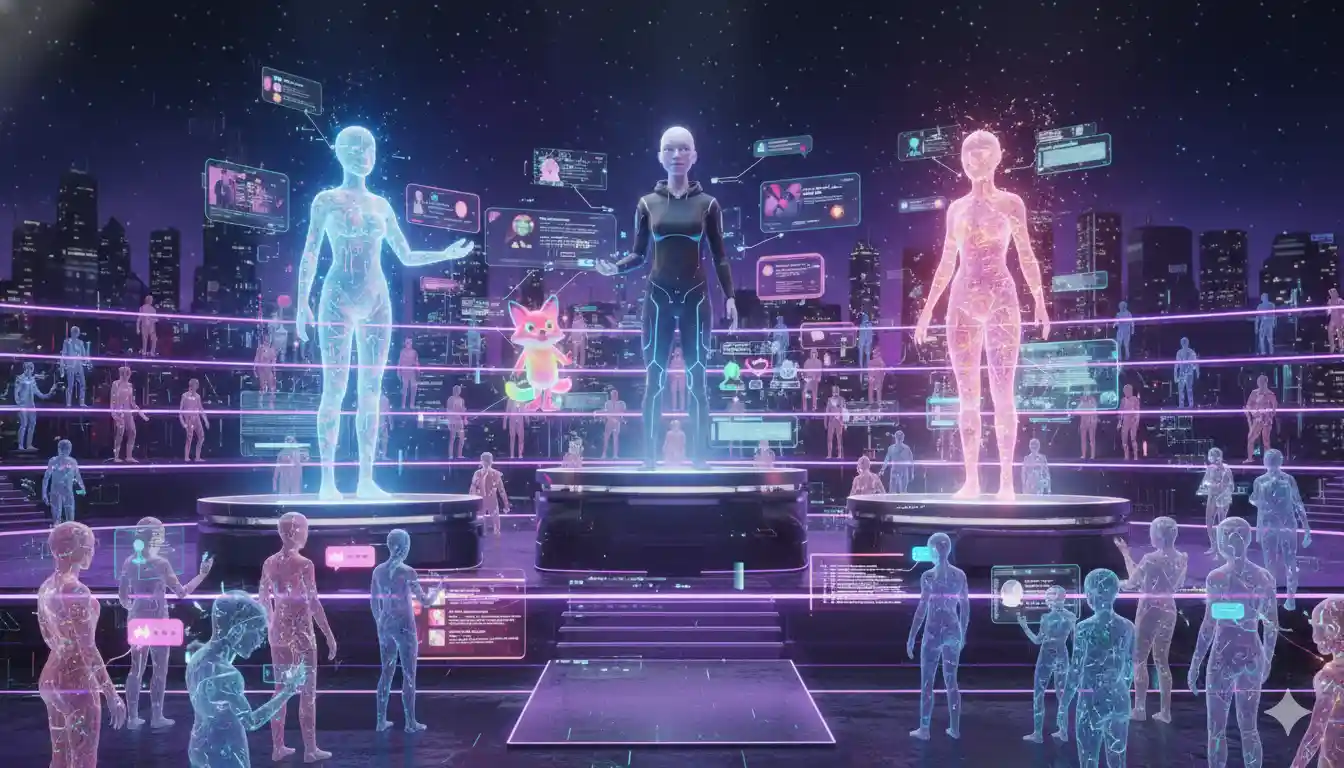
Interactive and Responsive AI Hosts
Imagine AI personalities that respond to comments in real-time, generating personalized video replies to individual viewers. Or live streams where AI hosts interact with audiences dynamically, creating truly unique experiences for each viewer. This technology is already being developed and tested.
Hyper-Personalized Content
AI could generate slightly different versions of videos tailored to individual viewer preferences—adjusting humor style, complexity level, or focus topics based on viewing history. You and your friend might watch the "same" video but receive subtly different versions optimized for each of you.
Human-AI Collaboration
Rather than complete replacement, we're likely to see partnerships where human creators work with AI personalities. A human might provide creative direction, strategic decisions, and authentic personal stories, while AI handles script refinement, voice work, or visual generation. This hybrid approach combines human creativity with AI efficiency.
New Platforms Designed for AI Content
Just as TikTok designed its platform around short-form mobile video, new platforms might emerge specifically optimized for AI-generated content—with features for discovering synthetic personalities, tracking character continuity, or enabling viewer interaction with AI hosts.
Should You Start an AI Video Vlog?
If you're considering creating AI video content, here's what to know. The barriers to entry are lower than traditional video creation—no camera equipment needed, no video editing skills required initially, and you can experiment with different characters and styles quickly. However, you still need strong creative concepts, understanding of audience preferences, and consistent content strategy.
The most successful AI vlogs combine technological novelty with genuinely good content. The AI is the delivery mechanism, but you still need compelling ideas, entertaining writing, and strategic thinking about what audiences want to watch.
Final Thoughts
AI video vlogs represent a fascinating evolution in digital content creation. They're not replacing human creators, but they're creating a new category of entertainment that blends technology with creativity in unprecedented ways.
Whether you're fascinated or skeptical, it's clear that AI personalities are here to stay. As the technology improves and creators experiment with new formats, we'll see synthetic content become increasingly sophisticated and integrated into mainstream entertainment.
The question isn't whether AI vlogs will succeed—they already have. The question is how they'll evolve, what new creative possibilities they'll unlock, and how they'll coexist with human creators in the expanding universe of digital content. One thing is certain: the line between artificial and authentic content will continue to blur, challenging our assumptions about creativity, authenticity, and what makes content worth watching.
The future of content creation is here, and it's more interesting—and complicated—than anyone predicted.
